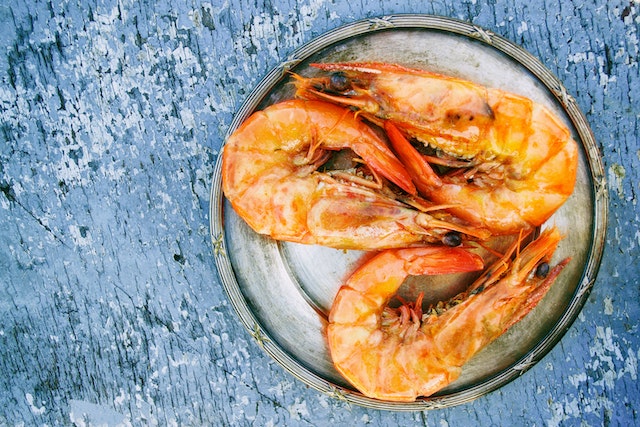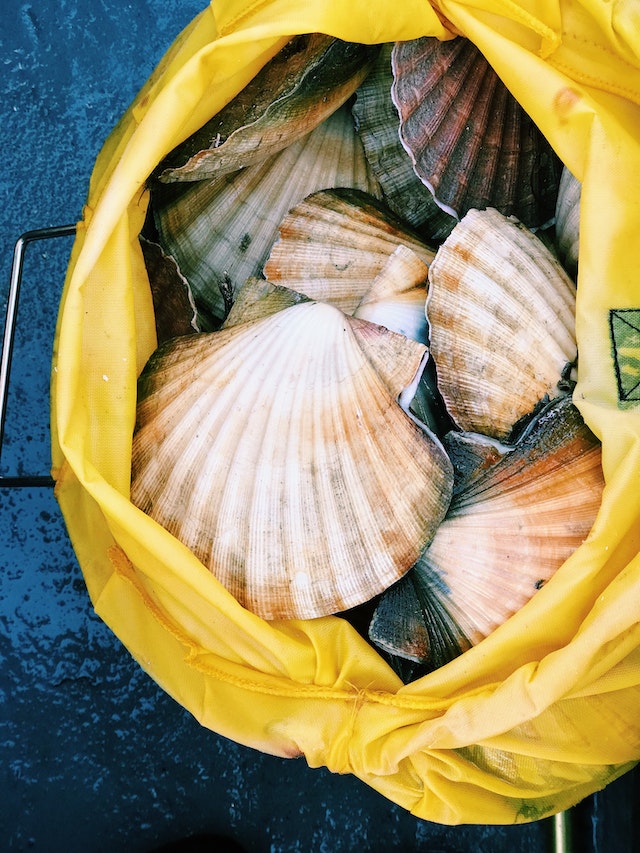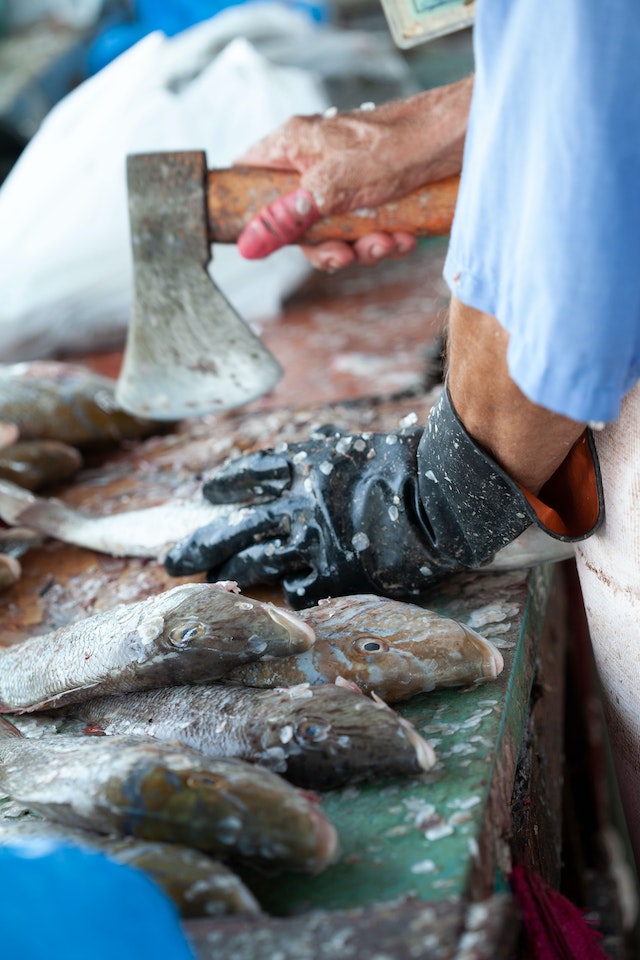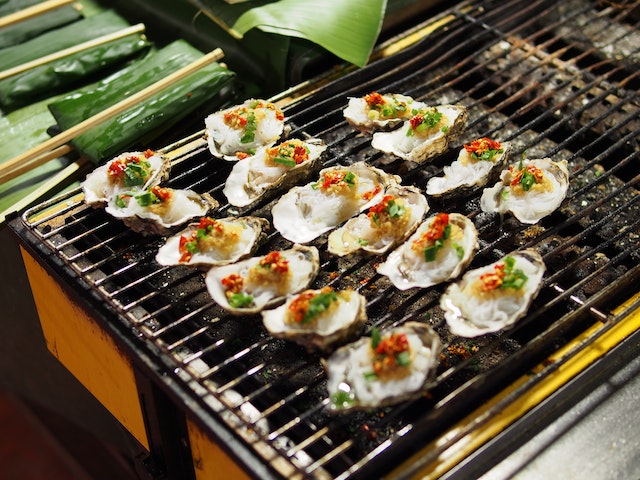
Few ingredients captivate the senses quite like seafood. With its intricate flavors, delicate textures, and abundant versatility, seafood has established an unrivaled reputation amongst chefs and enthusiasts alike. Harvested from the bountiful depths of oceans, lakes, and rivers, these delectable treasures have been a vital part of our diet since time immemorial.
Whether it’s the succulent sweetness of fresh shrimp, the buttery tenderness of scallops, or the firm flakiness of a perfectly grilled salmon, seafood offers an exceptional gustatory experience that teases and satisfies our taste buds in equal measure. Beyond its delectable taste, seafood provides substantial health benefits, being an excellent source of high-quality proteins, Omega-3 fatty acids, and an array of essential vitamins and minerals.
The beauty of seafood lies not only in its inherent taste but also in its remarkable versatility. From elegant appetizers to comforting stews, seafood seamlessly adapts to various cooking techniques and culinary traditions. Whether sautéed, steamed, grilled, or baked, each preparation method unlocks distinct flavors and characteristics, allowing chefs to unleash their creativity and craft truly mesmerizing dishes.
Types of Seafood
Seafood offers a wide array of options, each with its own unique taste and texture. Understanding the different types of seafood is the first step in creating delectable seafood dishes. Here, we’ll explore some common categories of seafood.
Fish
Fish are some of the most popular seafood options and come in various varieties:
- Whitefish: Fish like cod, haddock, and sole have mild flavors and flaky textures, making them great for a wide range of recipes.
- Salmon: Known for its rich flavor and pink-orange hue, salmon is prized for its versatility and health benefits.
- Tuna: Tuna offers a meaty texture and is commonly used in salads, sandwiches, and sushi.
Shellfish

Shellfish include a group of seafood with soft, edible shells:
- Shrimp: These tiny but flavorful shellfish are used in a multitude of dishes, from scampi to shrimp cocktails.
- Crab: Crab meat is delicate and sweet, making it ideal for crab cakes and crab salad.
- Lobster: Known for its indulgent taste, lobster is often featured in lobster rolls, bisque, and whole lobster dishes.
Crustaceans
Crustaceans belong to the larger family of shellfish and often have hard exoskeletons:
- Crayfish: These small lobster-like crustaceans are a Southern favorite and are used in dishes like étouffée.
- Crawfish: Similar to crayfish, they’re a staple in Cajun cuisine and enjoyed in boils and stews.
Mollusks
Mollusks include a diverse range of seafood:
- Clams: Clams are used in dishes like clam chowder and linguine with clam sauce.
- Mussels: Mussels are often steamed and served with flavorful broths and sauces.
- Oysters: Oysters are enjoyed raw, baked, or grilled, and they have a distinctive briny taste.
Seafood Alternatives
For those who prefer plant-based options, there are seafood alternatives that mimic the taste and texture of traditional seafood. These include products made from ingredients like tofu, tempeh, or seaweed, and they can be used in various seafood recipes.
Selecting Fresh Seafood
Choosing the freshest seafood is essential for delicious and safe cooking. Whether you’re at the fish market or the grocery store, these guidelines will help you make the right choices.
1. Visual Indicators of Freshness: Look Before You Buy
Fresh seafood should have certain visual characteristics that signal its freshness:
- Clear Eyes: If you’re buying whole fish, look for clear, shiny eyes. Cloudy or sunken eyes are a sign of older fish.
- Firm Flesh: When touching seafood, it should feel firm, not mushy. Fish fillets and whole fish should bounce back when gently pressed.
- Vibrant Color: Fish and shellfish should have their natural, vibrant colors. Avoid seafood with dull or off-coloring.
- Moisture: The seafood should appear moist, not dry or sticky. Excess dryness can indicate aging.

2. Smell and Texture: Use Your Senses
Your senses, especially smell and touch, can help you judge seafood’s freshness:
- Fresh Seafood Smell: Fresh seafood should have a clean, ocean-like smell. Avoid any fishy or ammonia-like odors.
- Texture Check: Run your fingers along the seafood’s surface. It should feel slightly slippery but not slimy.
3. Buying Frozen Seafood: When Fresh Isn’t an Option
If you can’t find fresh seafood, frozen seafood can be an excellent alternative:
- Quick Freezing: Seafood is often flash-frozen at its peak freshness, preserving its quality.
- Check Packaging: Ensure that the frozen seafood is well-sealed and free of ice crystals, which can indicate thawing and refreezing.
4. Sustainable Seafood Choices: Supporting Ocean Health
Choosing sustainable seafood is essential for maintaining healthy ocean ecosystems. Look for labels or ask your fishmonger about sustainable options:
- MSC-Certified: Look for the Marine Stewardship Council (MSC) label, which indicates sustainable fishing practices.
- Aquaculture Certification: Some farmed seafood can be sustainable, so check for certification from organizations like the Aquaculture Stewardship Council (ASC).
- Seafood Guides: Consult seafood guides from organizations like Seafood Watch to learn about sustainable choices.
Cooking Methods for Seafood
Seafood is incredibly versatile, and there are various cooking methods to choose from, depending on the type of seafood and the flavors you want to create. Here, we’ll explore some common cooking methods for preparing seafood.

Grilling
Grilling seafood is a popular method that adds a smoky flavor and a touch of char. It’s an excellent choice for fish fillets, shrimp, and even whole fish.
How to Grill Seafood:
- Preheat your grill to medium-high heat.
- Brush the seafood with oil and season with your favorite spices.
- Place it on the grill grates and cook until it flakes easily, usually a few minutes on each side.
Baking
Baking is a gentle method for cooking seafood. It’s perfect for creating flavorful and tender dishes like baked salmon or stuffed fish.
How to Bake Seafood:
- Preheat your oven to the desired temperature.
- Season the seafood and place it in a baking dish.
- Bake until the seafood is cooked through and flakes easily with a fork.

Pan-Searing
Pan-searing is a fast and flavorful way to cook seafood, producing a crispy exterior while keeping the inside tender. It’s ideal for scallops, fish fillets, and shrimp.
How to Pan-Sear Seafood:
- Heat a pan with oil over medium-high heat.
- Place the seafood in the hot pan and sear for a few minutes on each side until it’s golden brown and cooked through.
Steaming
Steaming seafood is a gentle and healthy method that retains the natural flavors and moisture. It’s perfect for delicate seafood like clams, mussels, and fish.
How to Steam Seafood:
- Bring water to a boil in a pot with a steamer basket.
- Place the seafood in the basket, cover, and steam until it’s opaque and cooked.
Poaching
Poaching is a gentle method where seafood is gently simmered in flavorful liquid. It’s great for keeping seafood moist and infusing it with subtle tastes.
How to Poach Seafood:
- Create a flavorful poaching liquid with herbs, broth, or wine.
- Place the seafood in the liquid and simmer until it’s tender and fully cooked.
Frying
Frying seafood can create crispy and golden delights. It’s ideal for fish and seafood like shrimp and calamari.
How to Fry Seafood:
- Heat oil in a deep fryer or pan.
- Coat the seafood in batter or breadcrumbs and fry until it’s golden brown and cooked inside.
Ceviche and Sushi
Ceviche and sushi are unique methods where seafood is prepared raw. Ceviche involves marinating seafood in citrus juices, while sushi uses raw fish with rice and other ingredients.
Handling Seafood Safely
Enjoying seafood safely is essential to prevent foodborne illnesses and ensure your dishes taste their best. Here, we’ll cover some important guidelines for handling seafood safely.
1. Storage and Refrigeration: Keep It Cold and Fresh
Proper storage is crucial to maintain seafood’s freshness and safety:
- Refrigeration: Store seafood in the refrigerator at temperatures below 40°F (4°C). Use airtight containers or wrap it securely to prevent odors from spreading.
- Freezing: If you won’t use the seafood within a day or two, freeze it. Make sure to package it well to prevent freezer burn.

2. Cross-Contamination Prevention: Separation Matters
Prevent cross-contamination, which can occur when seafood comes into contact with other foods:
- Separate Storage: Store seafood away from other foods, especially those that won’t be cooked, to avoid cross-contamination.
- Cleanliness: Thoroughly wash hands, utensils, and cutting boards after handling seafood. Use hot, soapy water.
3. Cooking Temperatures: Cook It Right
Cook seafood to the recommended internal temperatures to ensure safety:
- Fish: Cook fish until it reaches an internal temperature of 145°F (63°C). The flesh should be opaque and easily flake with a fork.
- Shrimp and Shellfish: Shrimp, crab, and lobster should be cooked until they turn opaque and firm.
- Mussels and Clams: These should open during cooking. Discard any that remain closed.
4. Dealing with Shellfish Allergies: Be Allergy-Aware
Shellfish allergies are common, so it’s important to be mindful:
- Labeling: Clearly label dishes that contain shellfish when serving, and ask guests about allergies.
- Cross-Contamination: When cooking for someone with a shellfish allergy, take extra precautions to avoid cross-contact.
By following these safety guidelines, you can enjoy seafood without worry and create delicious and safe meals for yourself and others.
Seafood is a true culinary delight. Whether prepared on the grill, baked to perfection, or delicately steamed, the versatility of seafood knows no bounds. By understanding the different types of seafood and choosing the freshest options, we can embark on a gastronomic journey that tantalizes our taste buds and nourishes our bodies. So whether you’re a seasoned seafood connoisseur or a curious beginner, let the siren call of seafood guide you towards unforgettable culinary experiences. Dive into the oceanic world of flavors and indulge in the wonders of seafood, for it is a feast fit for gods and mortals alike.
